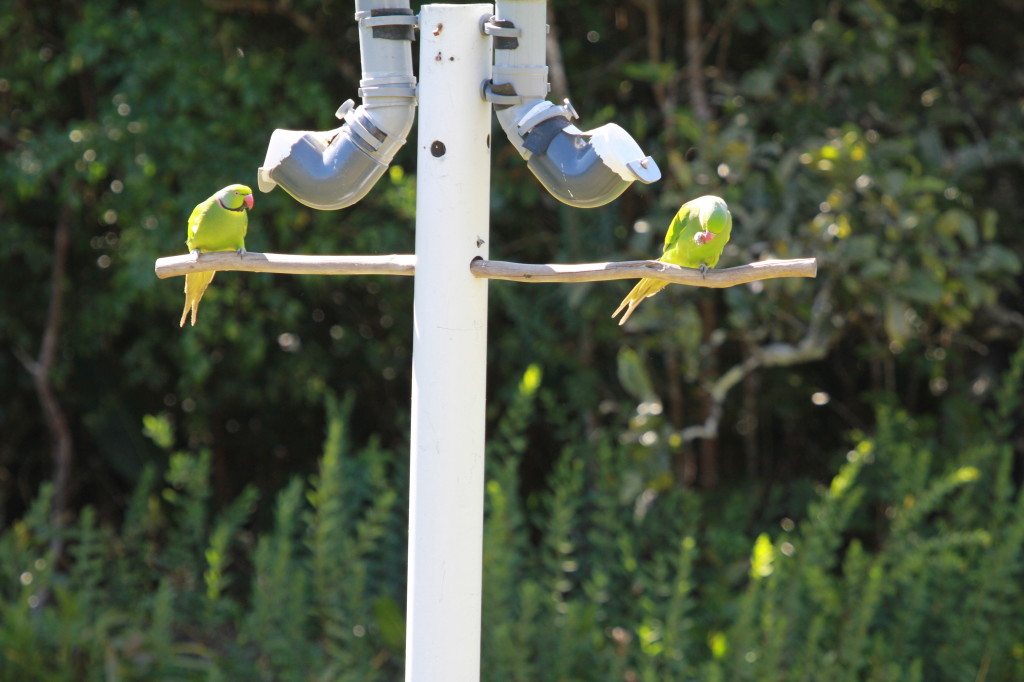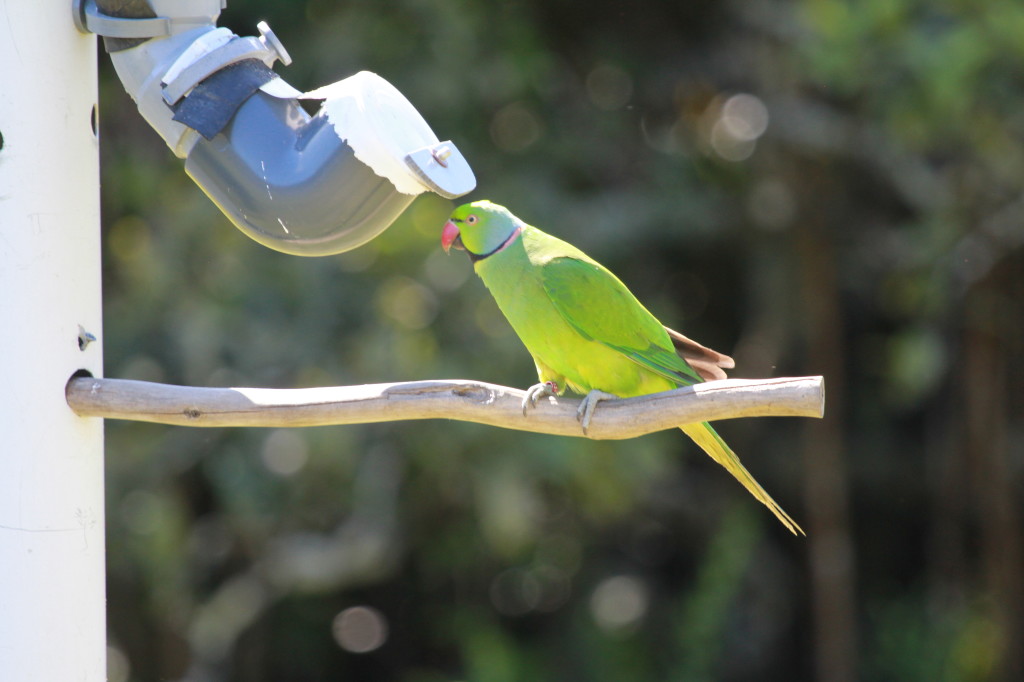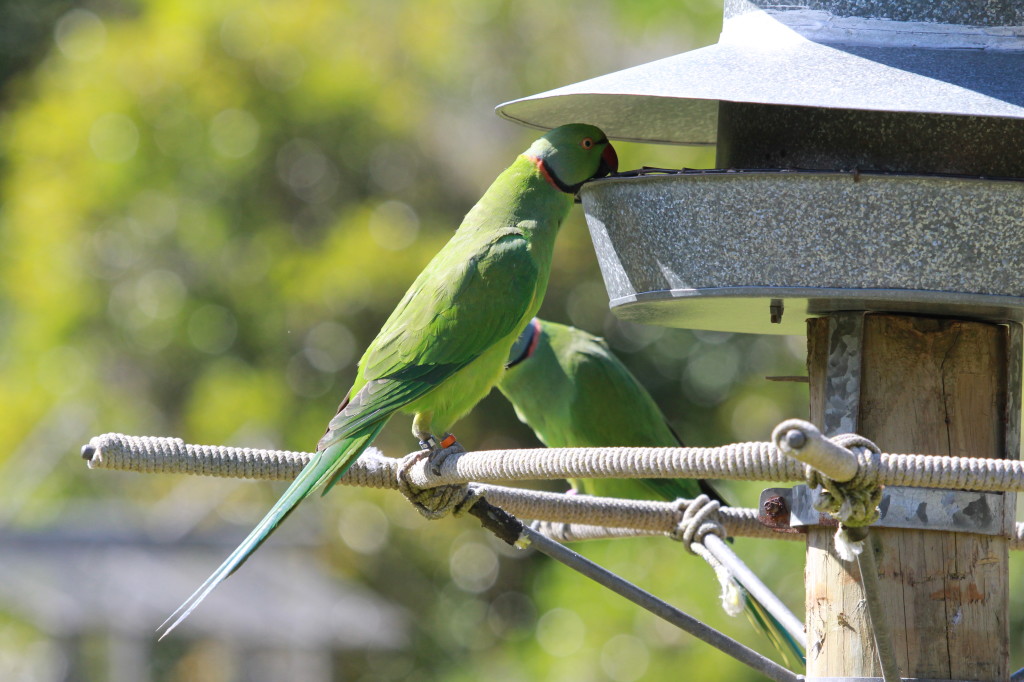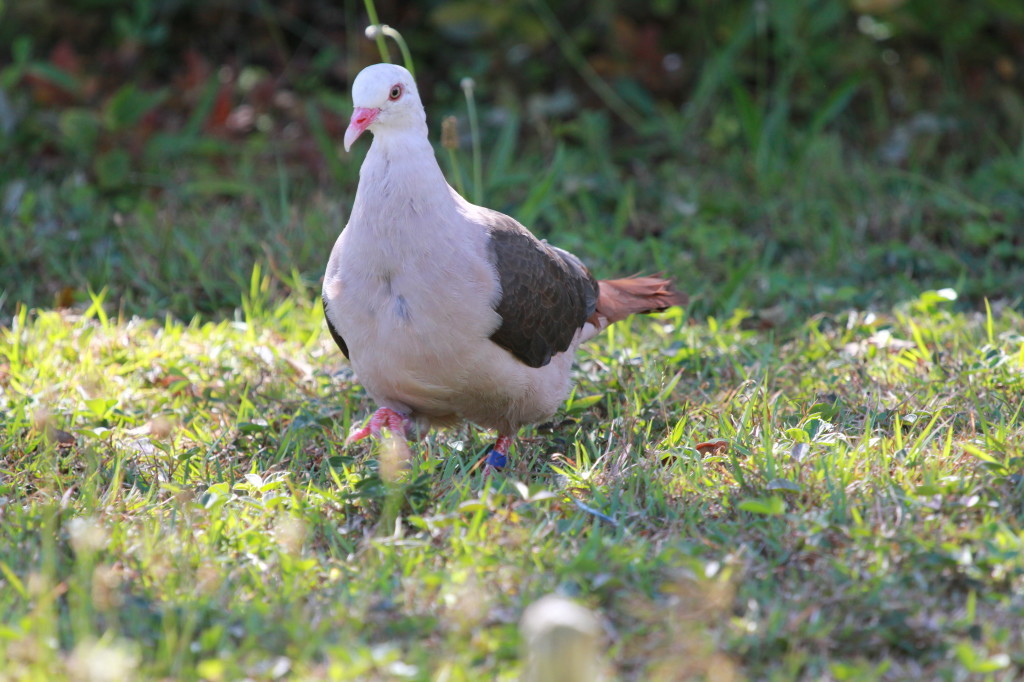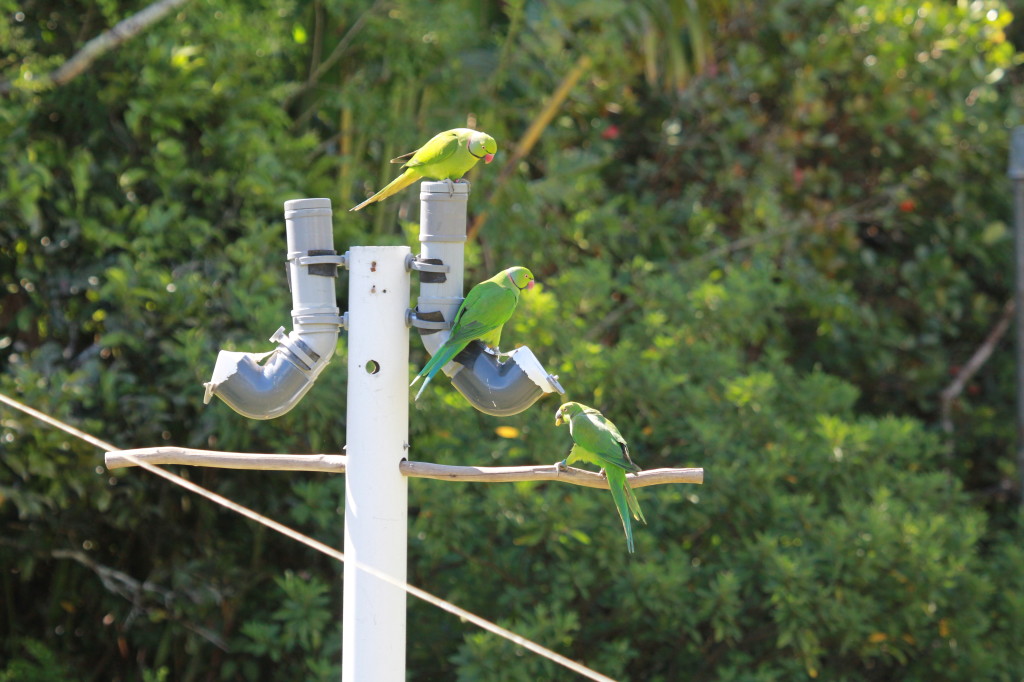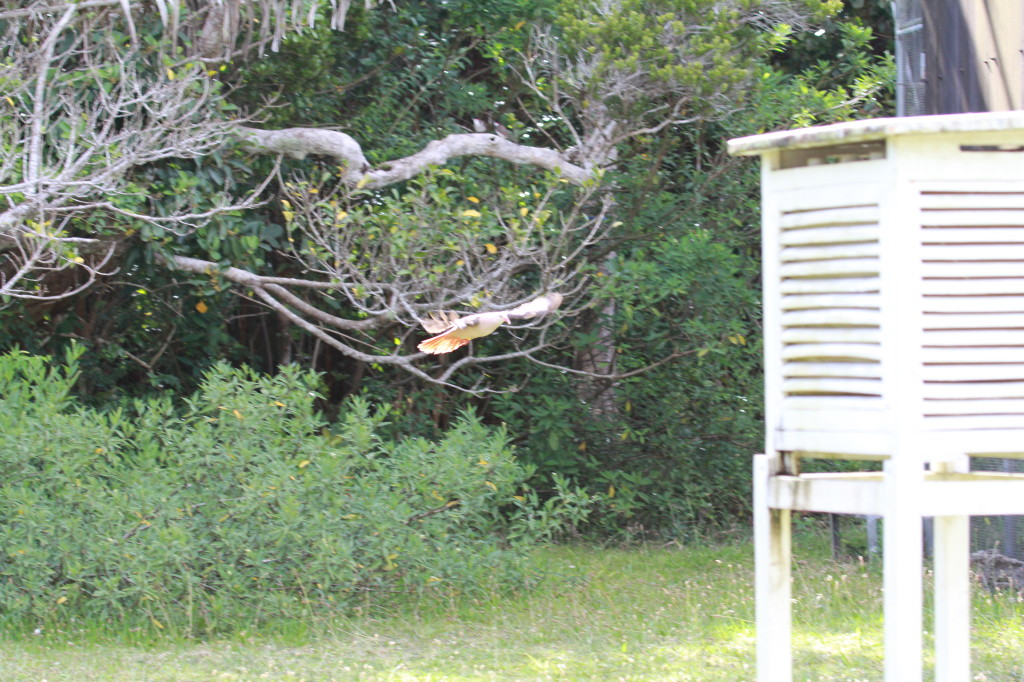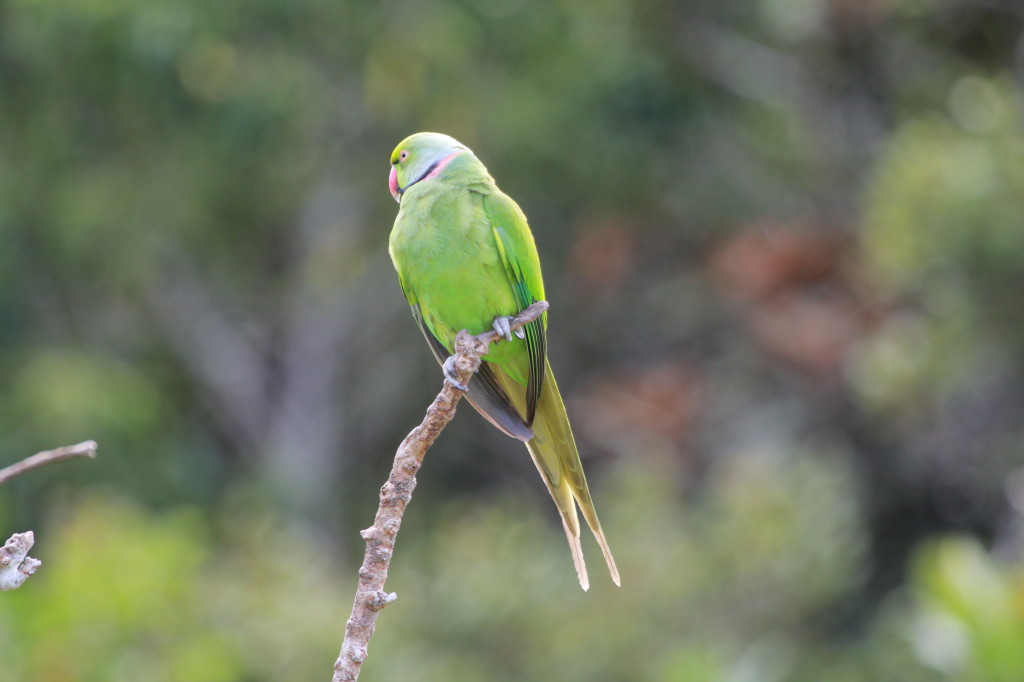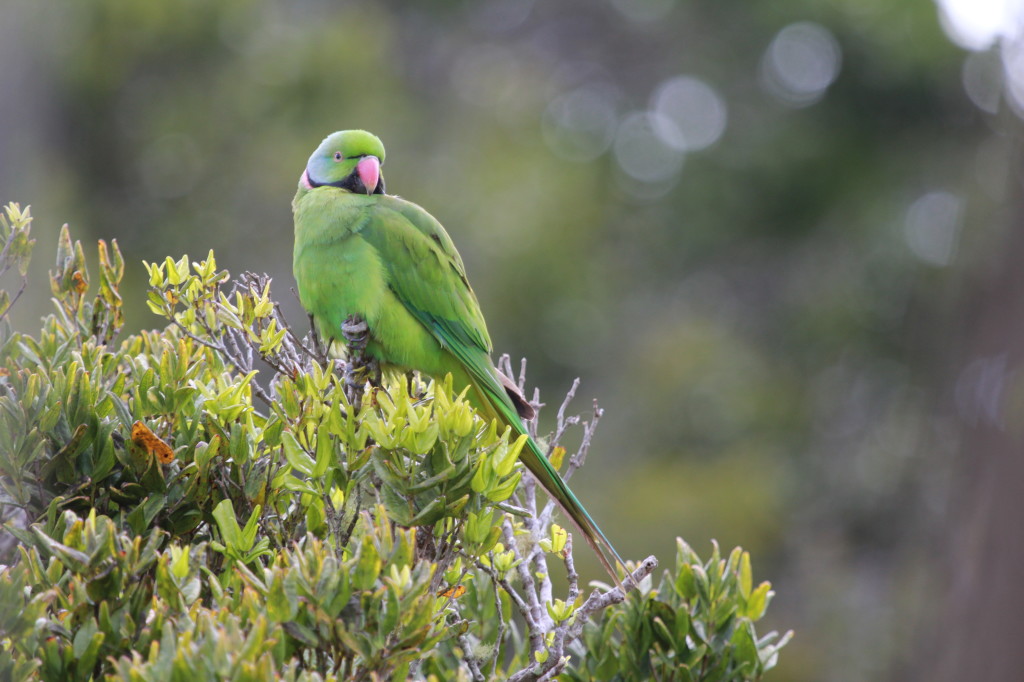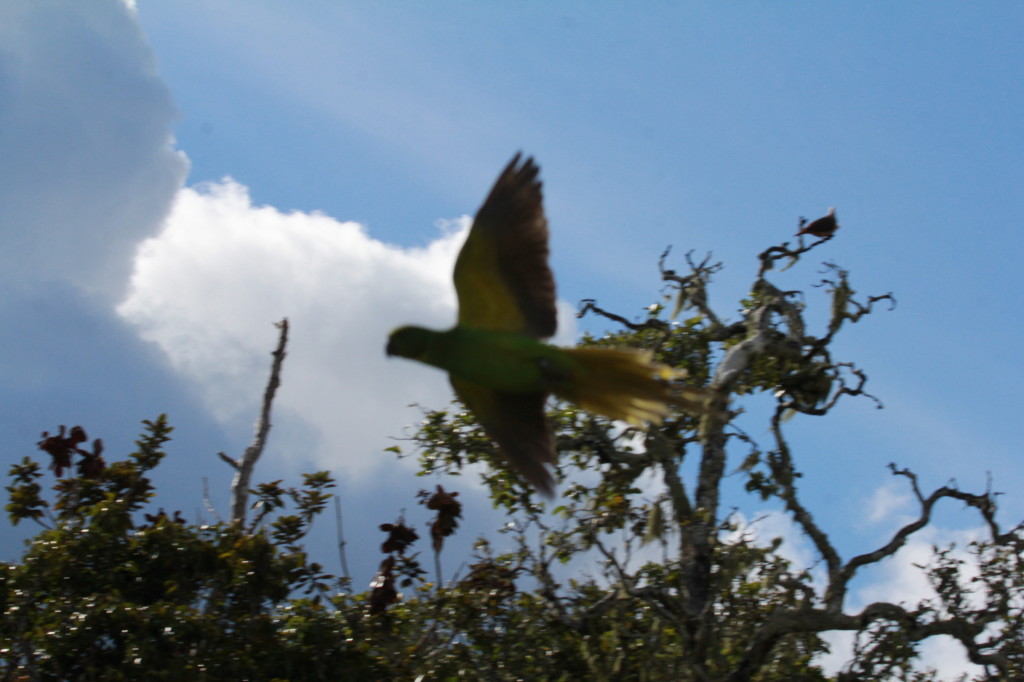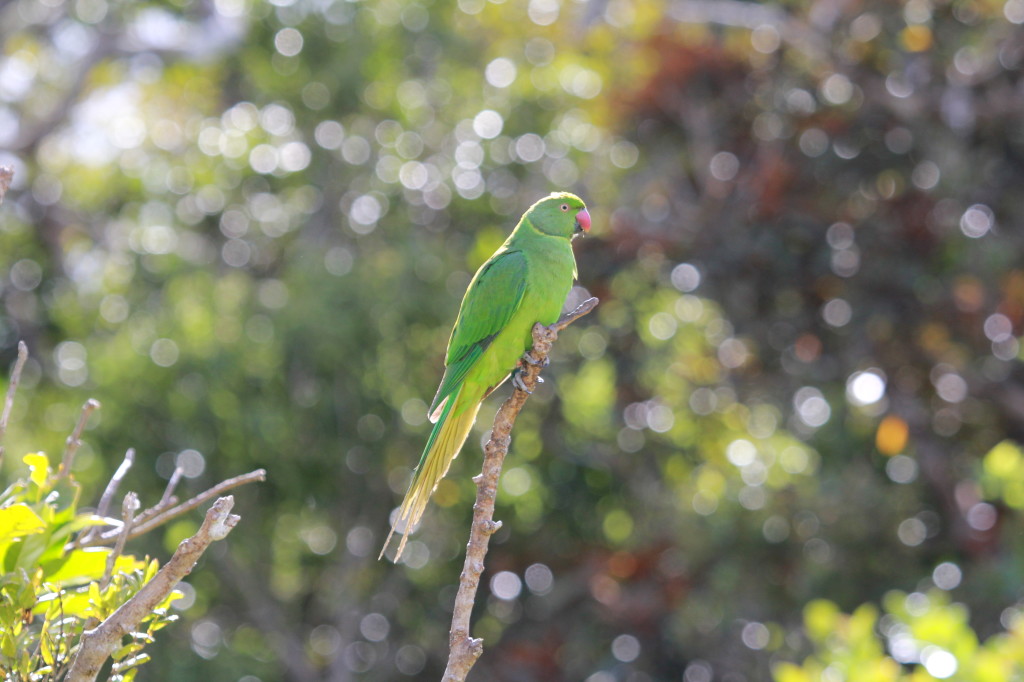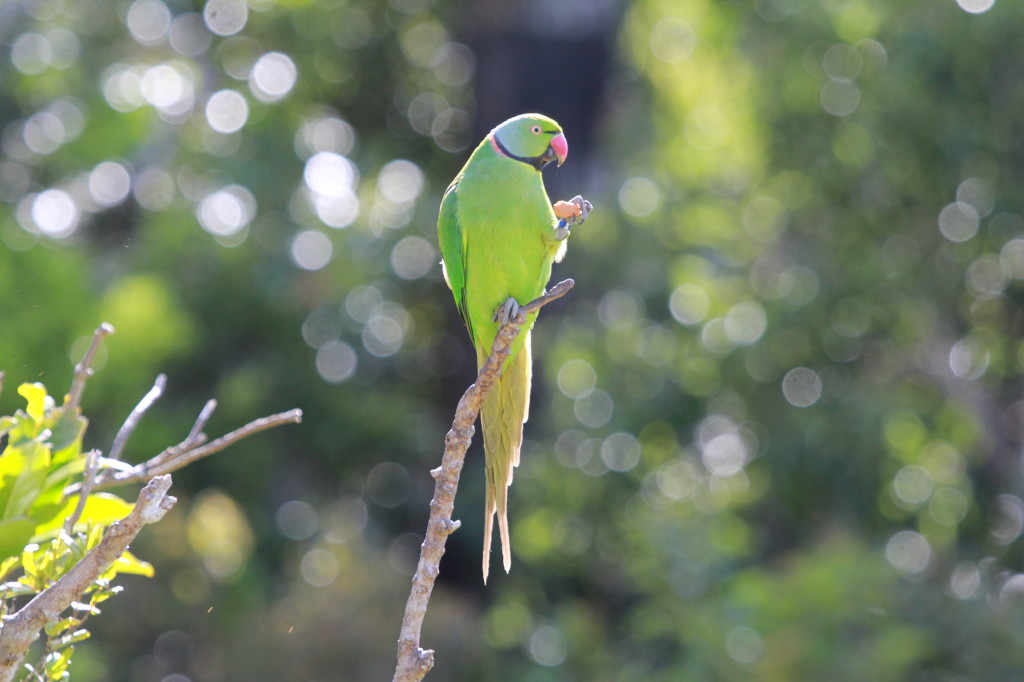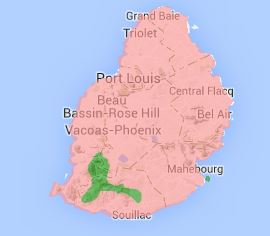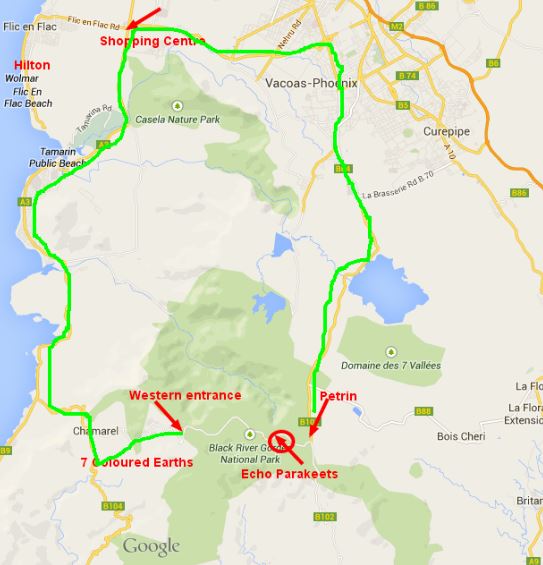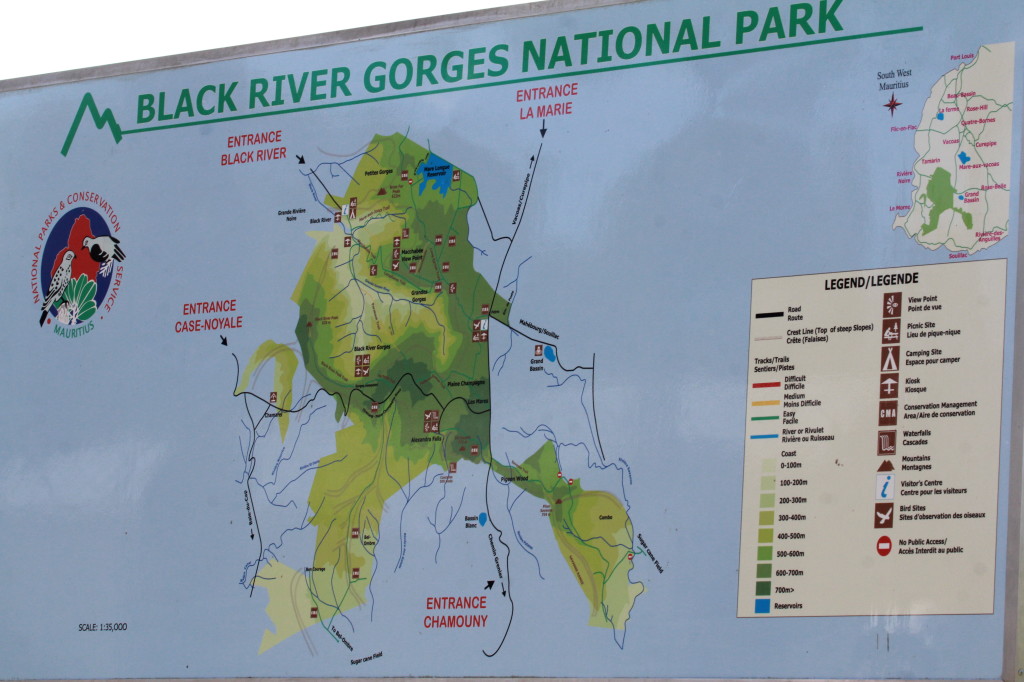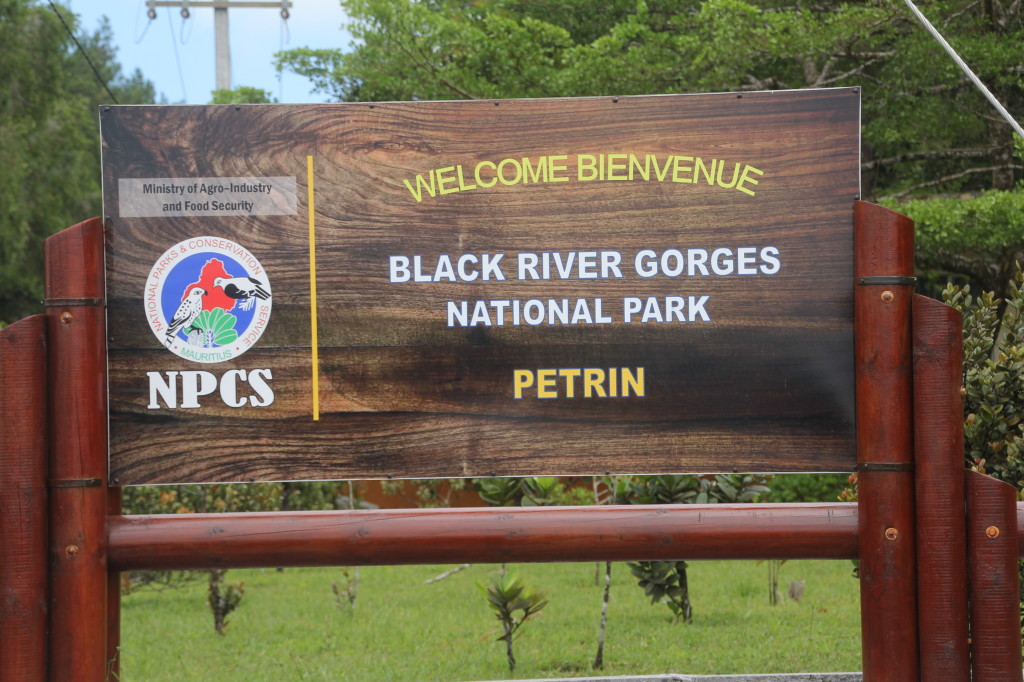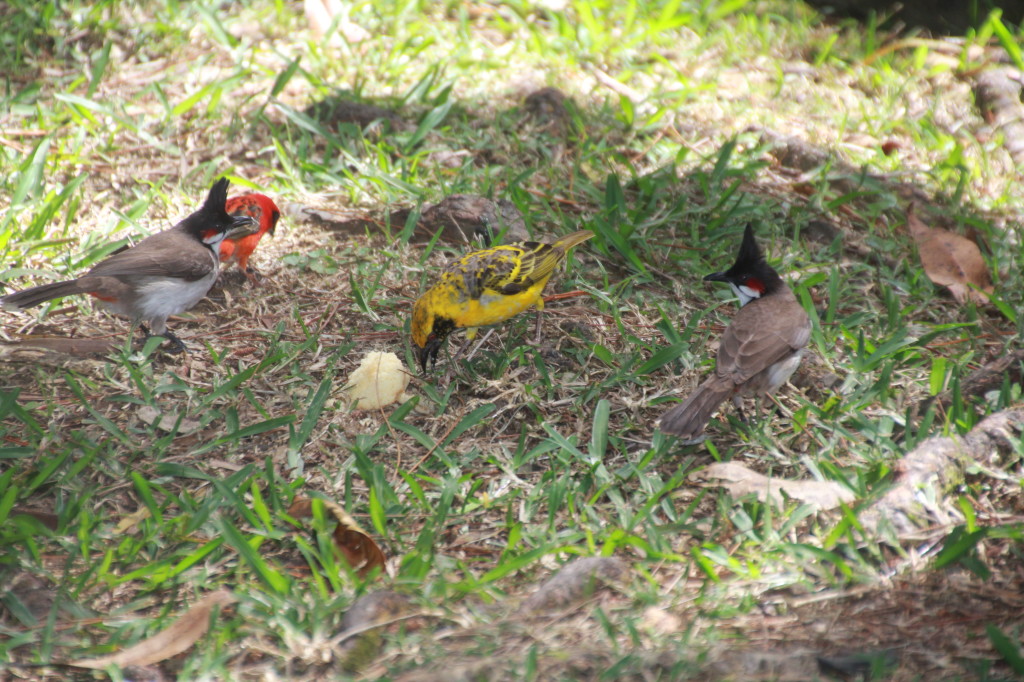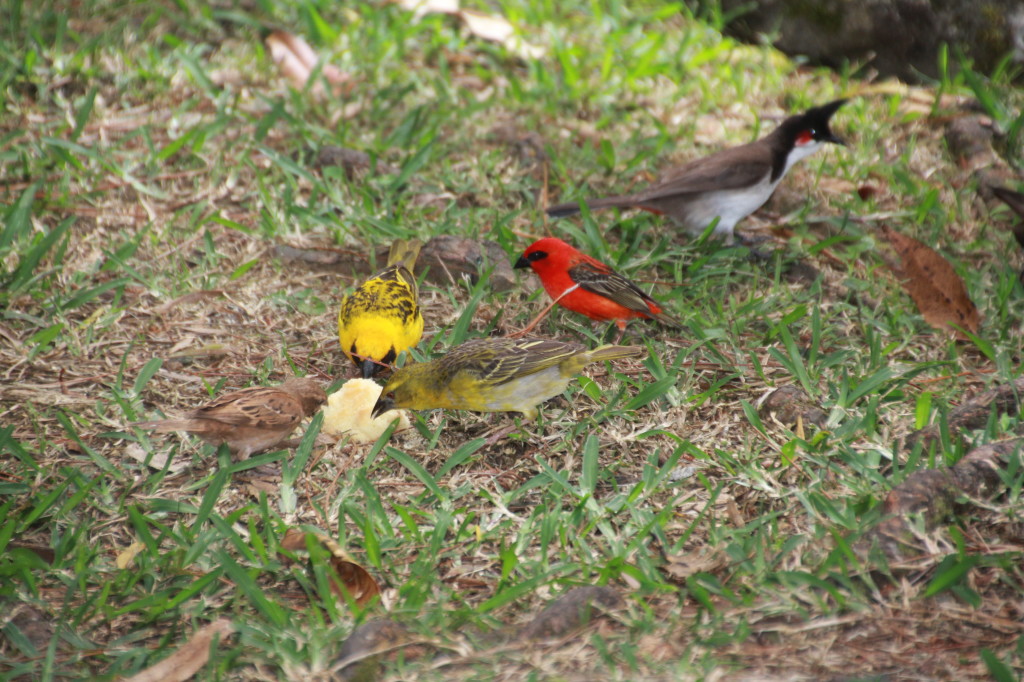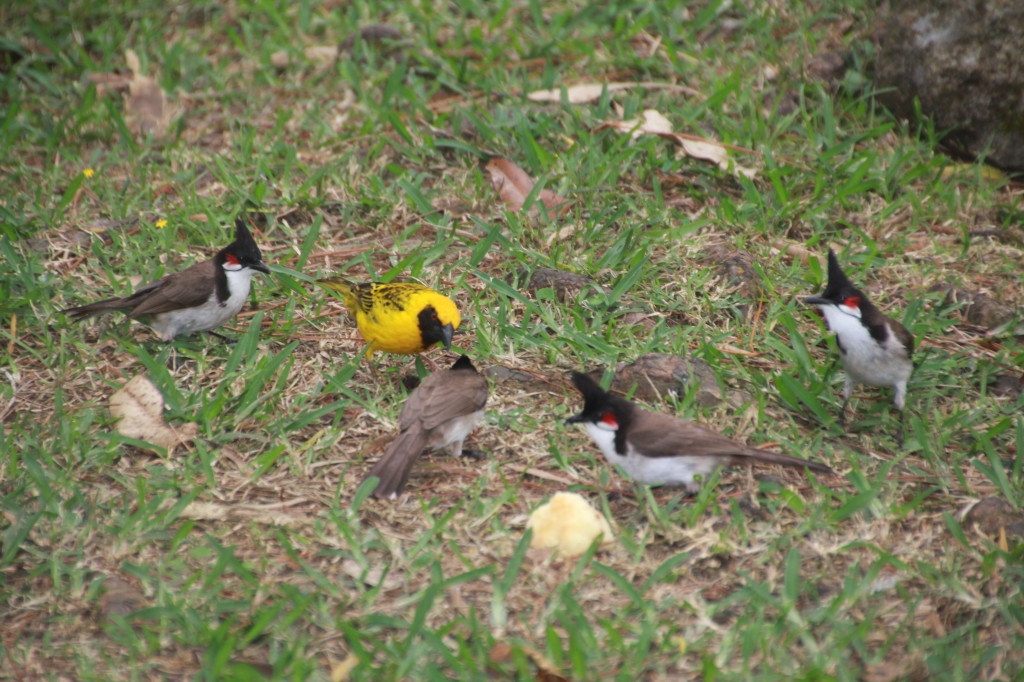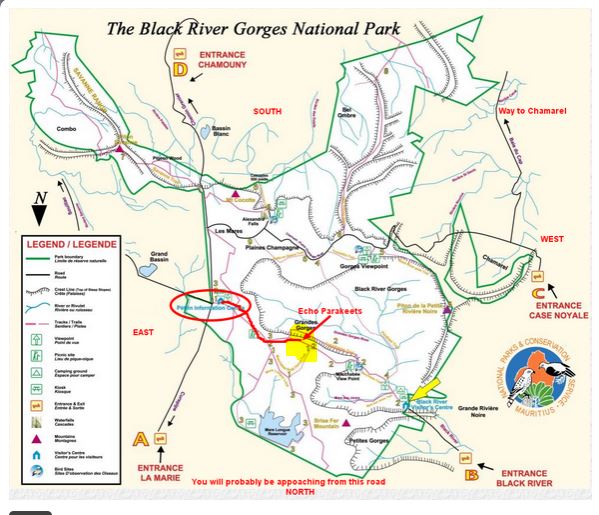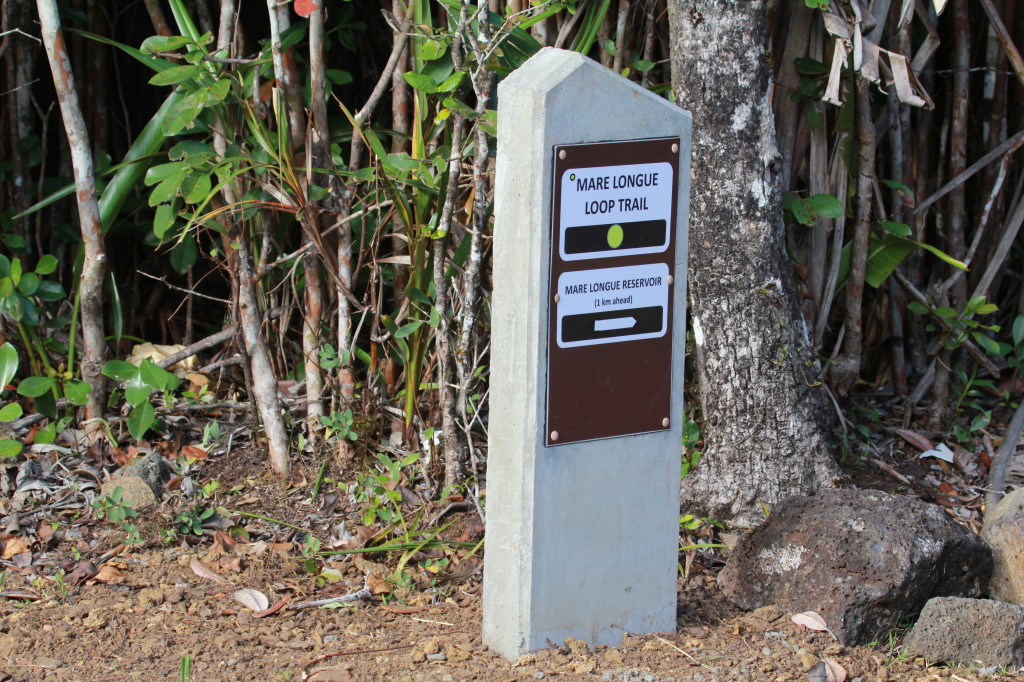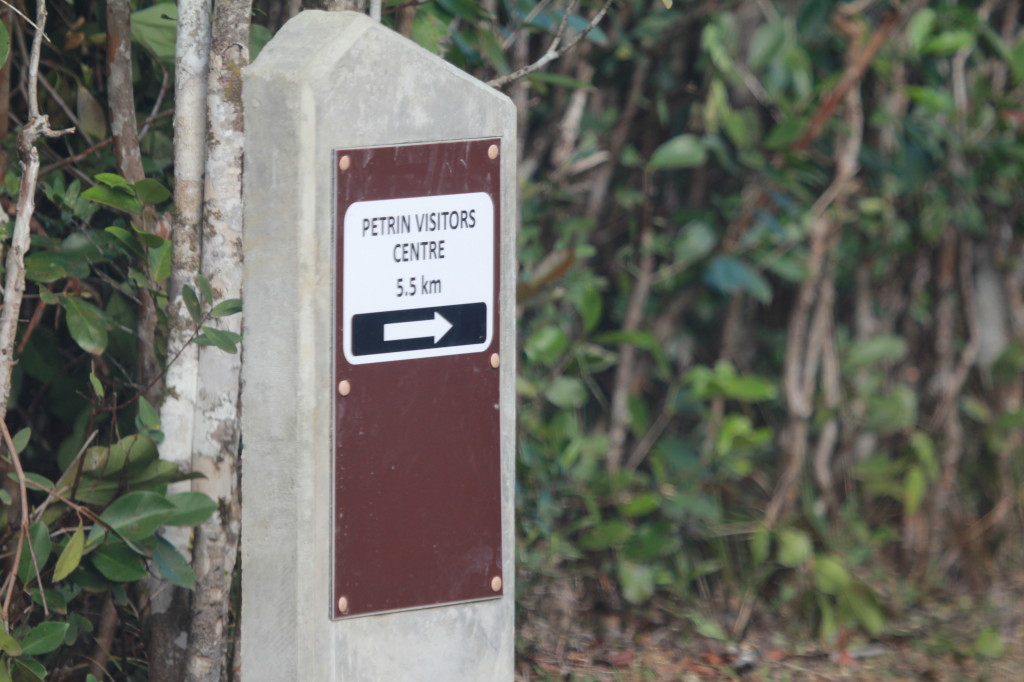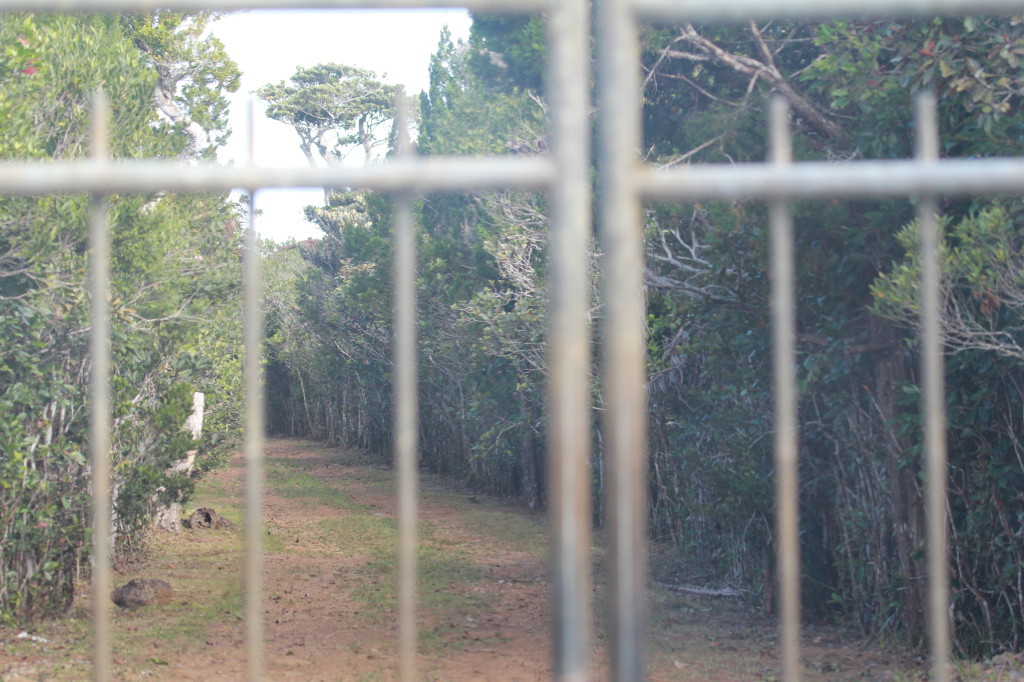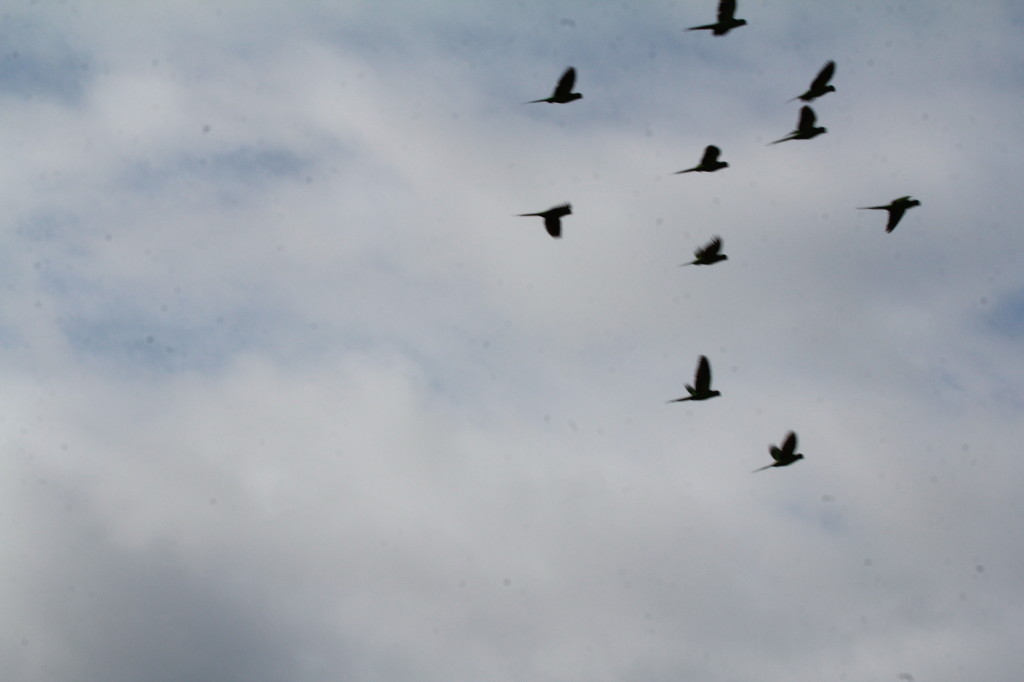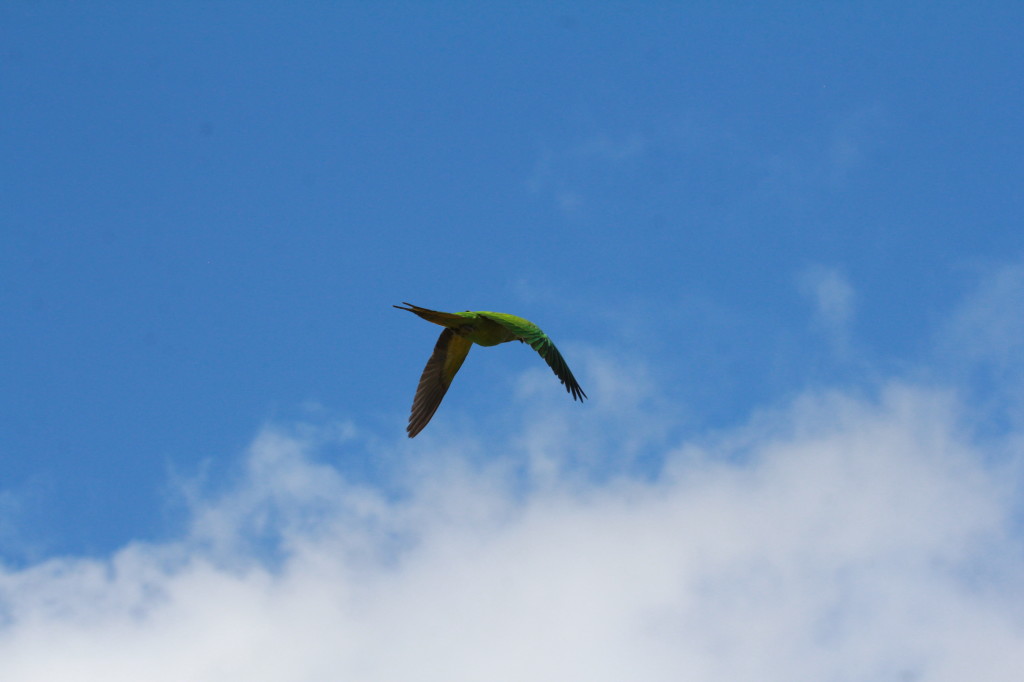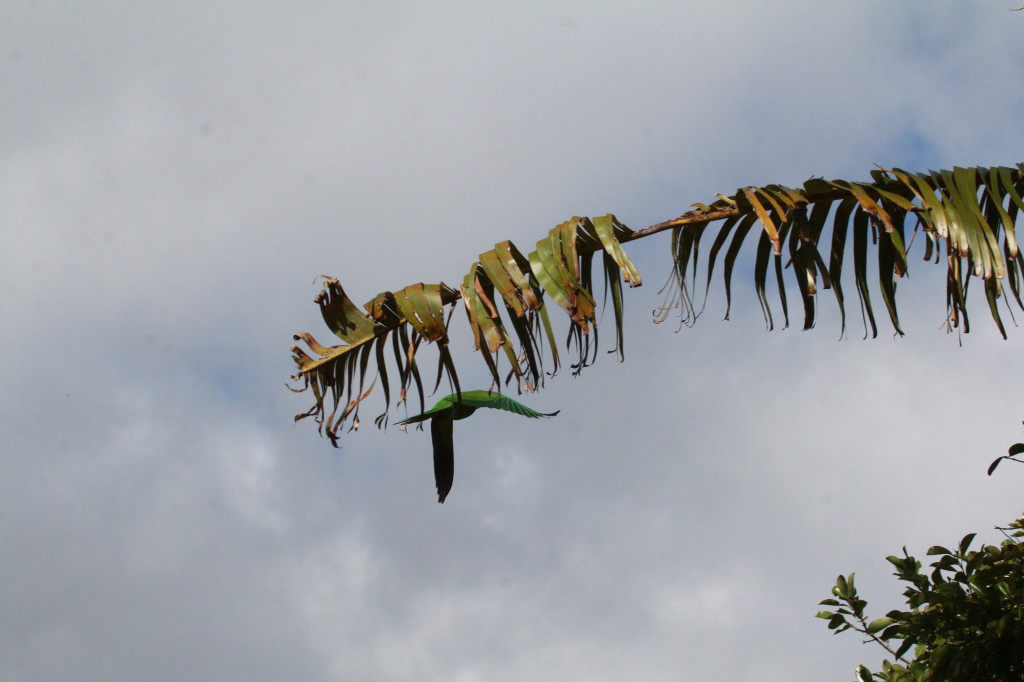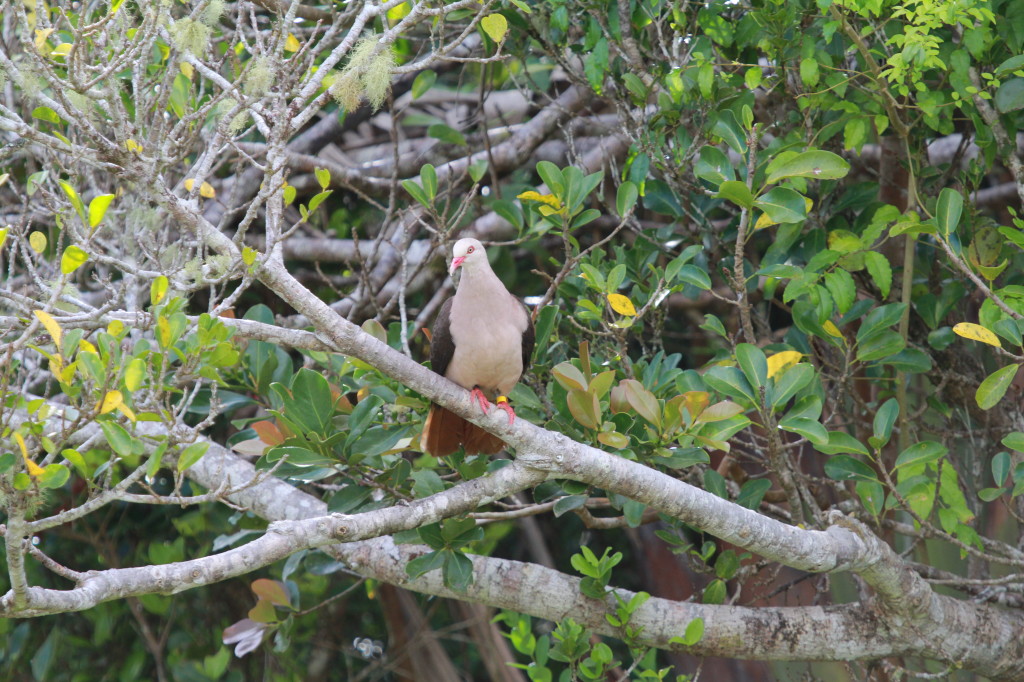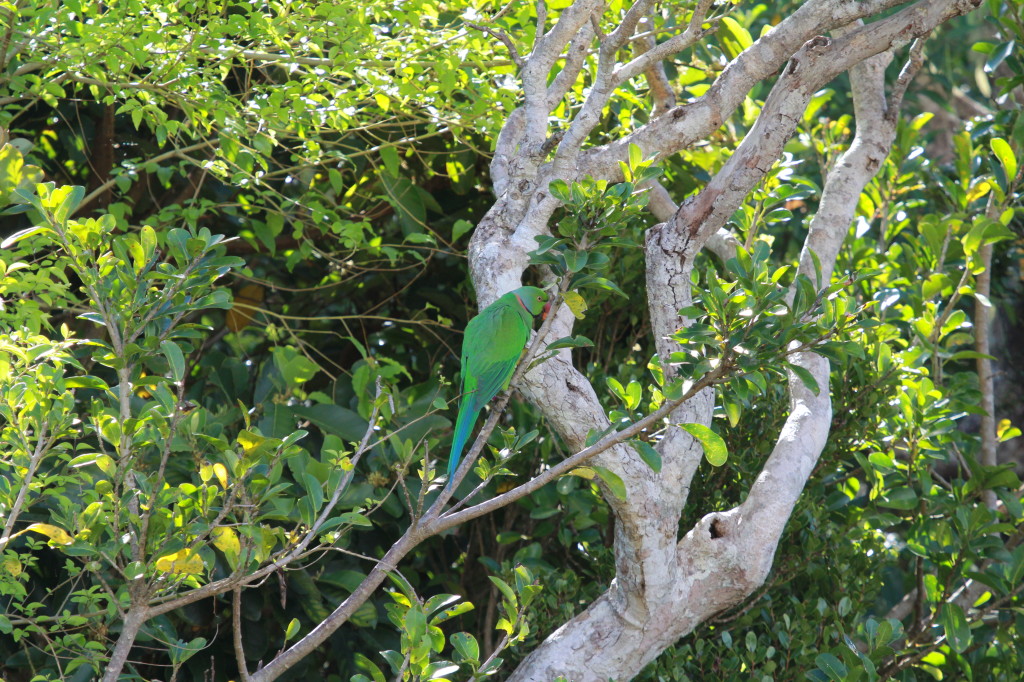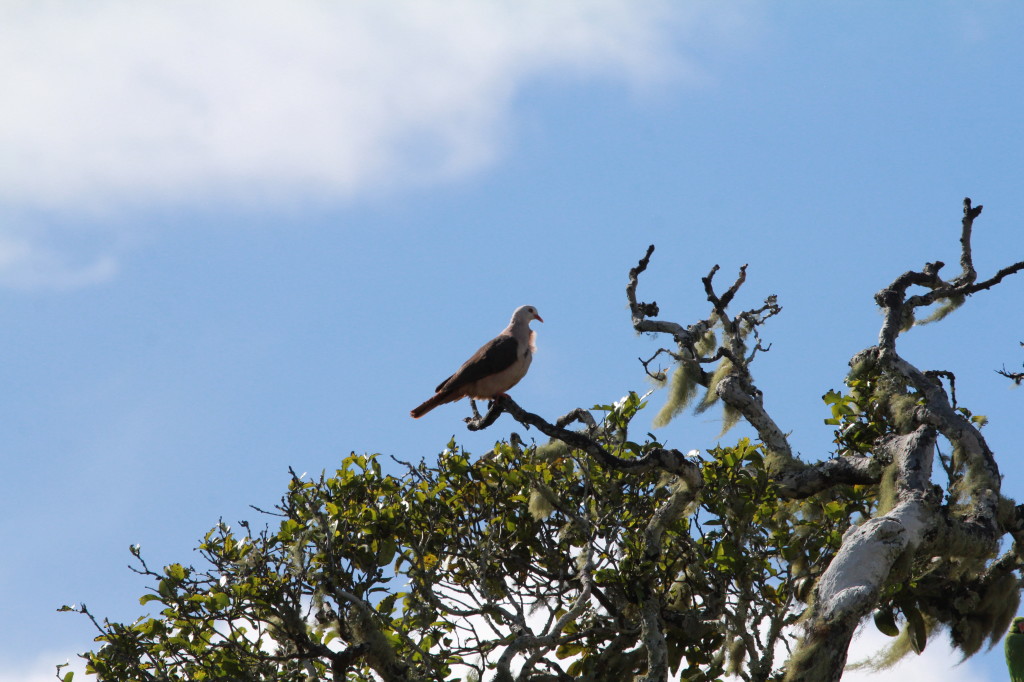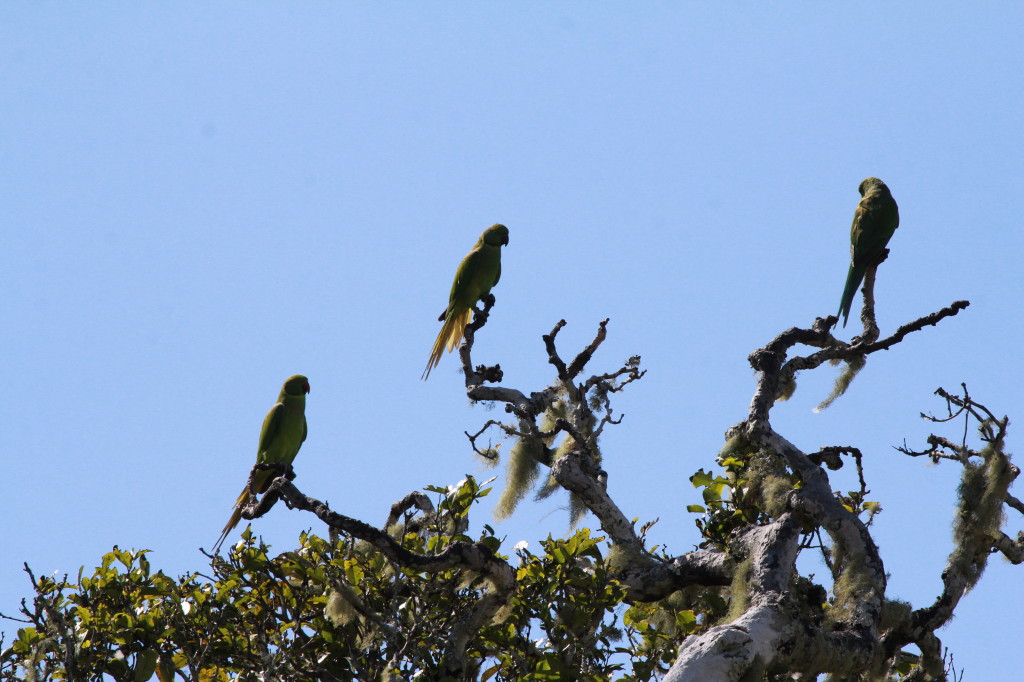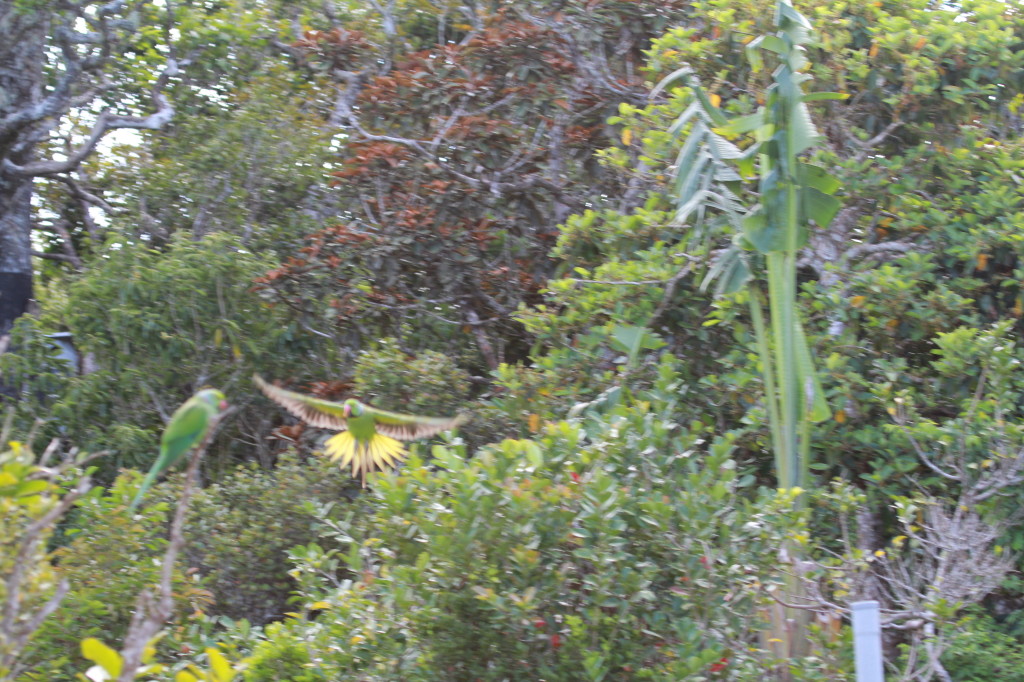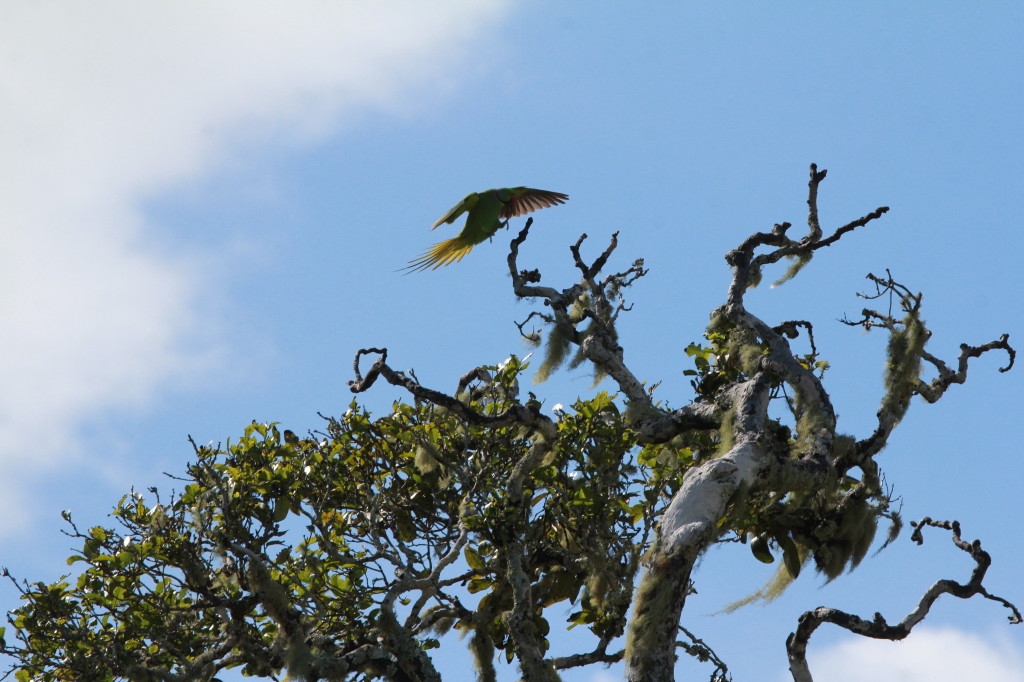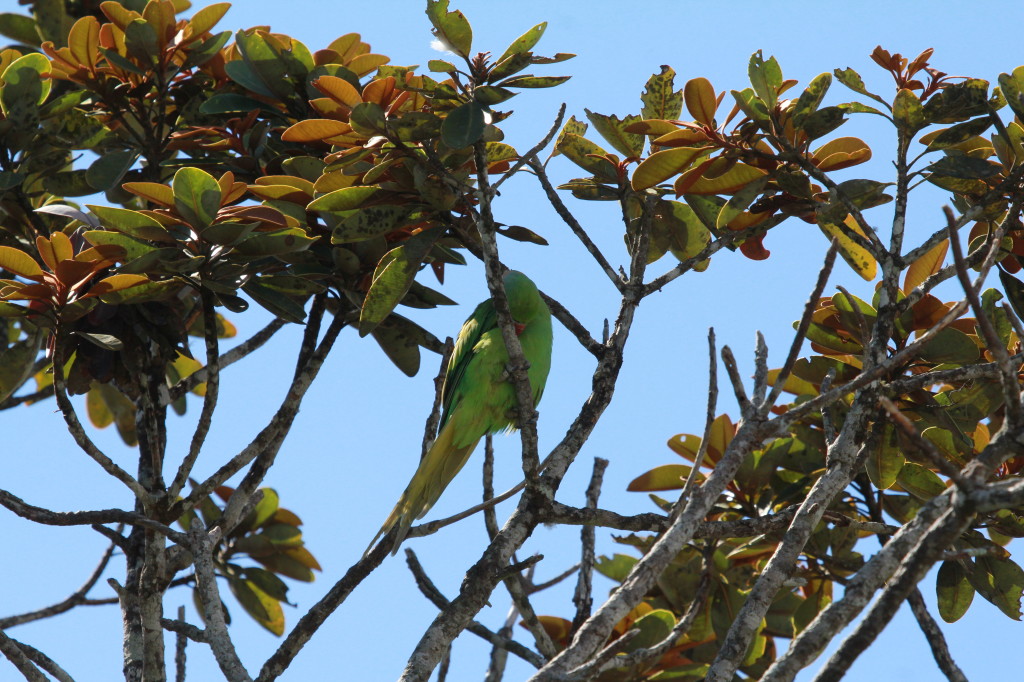While I was in Mauritius, I was very fortunate to have been invited to visit the Echo Parakeet monitoring station in Black River Gorges National Park. This came about when I met the program’s chief scientist Prof. Carl Jones at Loro Parque’s World Parrot Conference in Sept 2014. Just one more good reason to attend these conferences! I had mentioned to him that I am a travel blogger with a specialty in eco-tourism and birding and would like to see the Echo Parakeets. He gave me his card and after some emails, he told me he had gotten permission for my husband and I to visit.
We met him at the Petrin entrance and he took us around 5 km inside the park to the gated facility where the Echo Parakeets and Pink Pigeons are given nutritional supplements and studied. You can read the story of how Prof. Jones saved the species from extinction and brought the population of Echo Parakeets from a scant 10 to roughly 350 birds and learn more about the project here and here.
We entered the park with Prof. Jones and drove to the project grounds.
Once there, Prof. Jones and a visiting veterinarian went for a consultation leaving us to enjoy the up close and personal views of the birds. There are several of these feeders scattered around the grounds for the parakeets. They have to use their beaks to lift a lid and scoop out a pellet.
Pink Pigeons also frequent the facility and have their own food.
This type of feeder is meant for the pigeons but the naughty parakeets come and steal their food.
This is a close up of the pellet they are eating. This is only a supplement to their natural food.
This is a different feeder but basically the same principle.
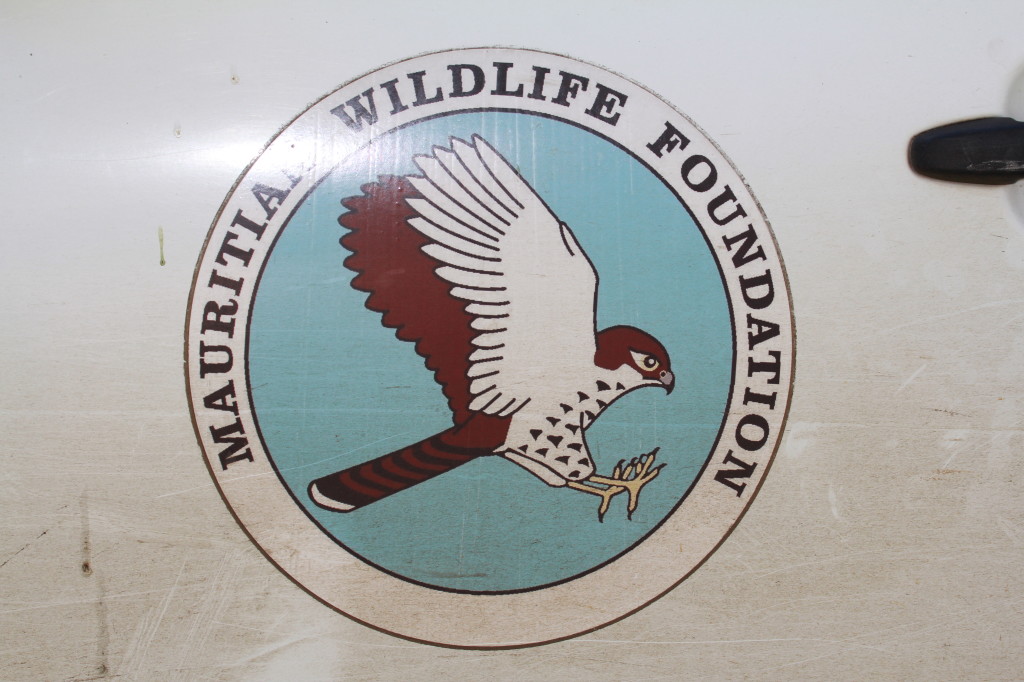 SHOW THE BIRDS SOME LOVE!
SHOW THE BIRDS SOME LOVE!
I just happen to be posting this on Valentine’s Day but this is valid any time and they always need more funds. If you would like to help Prof. Jones and his team conserve the Echo Parakeet and Pink Pigeon, they have a donation button on their website. You can also symbolically adopt one of 5 Mauritian animals. The Echo Parakeet isn’t one of the 5 but the Pink Pigeon is and they inhabit the same area so help one and help them all!



